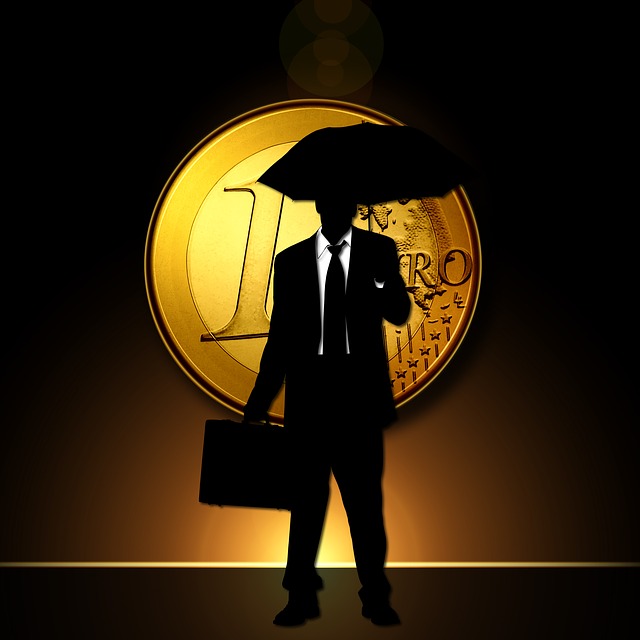Originally published August 13, 2016.
By Moses Apostitacus
One of the many titanic entities which collapsed during the Global Financial Crisis of 2007-2009 was the reputation of former Chairman of the United States Federal Reserve, Alan Greenspan. Presumably another one was his ego, although he’s not letting on. This man was held singularly responsible for the Great Moderation of the 1990’s, the economic miracle in the US of low inflation, rising nominal (that means not real) wages, statistically low unemployment (also not real) and steadily rising asset prices. Just about everyone was happy. The 0.01% received a massive boost to their net worth as leverage (that’s debt to us peasants) became cheaper and corporate valuations skyrocketed due to the replacement of US workers and consumers with much cheaper versions overseas. The 1% also grew wealthier as real estate and stocks rose inexorably higher. The ‘middle class’ felt wealthier as their incomes and house valuations appeared to rise, and although the lower class lost their manufacturing jobs to the Chinese, they could at least now afford to buy cheap appliances and gadgets at Walmart that were made by the people who took their jobs. By the year 2000 the general mood was euphoric and economists were unanimous: the future was bright for America. The internet had changed everything!
The first puncture to this bubble of hubris and self-congratulation was the dot-com crash of early 2000. The tech-based NASDAQ stock market index peaked in March 2000 above 5100, then by October 2002 it bottomed just above 1100. This first prick of the bubble was accompanied by the shock of the 9/11 attacks in New York, and the Bush administration’s subsequent invasions of Wherever We Like in the Middle East and people’s squishy bits at airports. The response of Greenspan’s Fed was to drop interest rates from above 6% to below 2%. This, alongside changes to the mortgage industry and financial deregulation brought in by the Clinton administration, had the desired effect of returning exuberance and by 2006 the optimism was back. The internet wasn’t the engine to bring about utopia this time though. This time, they bet the house.
Before delving in to what is today known as the Great Financial Crisis, and what will one day be known as the Greatest Bank Robbery Of All Time, we should take a moment to consider what interest rates actually are. The mandate given to central banks to set interest rates is a weighty and mighty responsibility. Put simply, interest rates are the price of debt. Given that in our fiat currency system debt is money, central banks essentially have the privilege of pricing money. That’s real power. A puny politician might be able to bribe a constituency with your tax money, or make everyone have to wear a helmet while riding a bike. That’s peanuts. A central banker can determine the political fortunes of entire governments, change the values of a hundred million homes or eradicate whole economic sectors with a raised eyebrow. Who is Caesar?
Yes, I exaggerate, but only slightly. Behind the veneer of wonkish respectability lurks raw, unaccountable power. Greenspan himself succumbed to this power in a very obvious way. Prior to becoming Fed Chair, Greenspan was a Randian libertarian: small government, free markets, gold is real money… that sort of thing. Upon becoming Chairman, Greenspan morphed into a statist Keynesian so rapidly it was like the unveiling of a Sith in Star Wars. He became The Maestro, the central planner extraordinaire who benevolently held the economic fate of the world in his hands. After stepping down in 2006, right on the cusp of the economic meltdown, he’s gone back to his goldbugging ways. How he squares that circle at New York dinner parties, I don’t know. Maybe he just gets takeaway.
Greenspan’s transmogrification was a moral betrayal of what he knew was true, which was necessary for him to be accepted by his political patrons. This is the problem. Central banks strive mightily to appear like boring, academic think-tanks to outsiders, and the propaganda (what some still call ‘the news’) portrays them that way. The banknotes they create for each country are covered in symbols of respectability. They describe themselves using terms such as ‘data-dependent’, and seek to always portray themselves as neutral and above the grubby fracas of politics. They’re not.
Without getting too tinfoil-hat on you, who exactly owns and runs central banks is always opaque. They are not government institutions, yet they are involved at a profound level in politics due to the enormous economic power they wield. Central banks have been established in pretty much every country around the world, and they are controlled either directly or indirectly by the global financial oligarchy. They are also thoroughly socialist. One of the ten planks of Marx’s plan in the Communist Manifesto to bring about the communist revolution, alongside universal public education and a progressive income tax, was the establishment of a central bank. The economic theories that central banks follow are still largely based on the work of Keynes, who was an avowed socialist and advocate for indirect state control of the economy. Our democratic socialist political system in the West requires constant, exponential government debt expansion to survive. Central banking allows this political largesse with the future taxes of the young and unborn. The standard of living of many people today would be much lower, and the standard of living of many people in the future much higher, if central banks did not provide governments with the capacity to rack up trillions in debt that future taxpayers will be expected to shoulder. If word of this got out, the toddlers would burn those daycare centres to the ground in outrage. They thought lunch was free, when actually it’s all on them.
If countries today held to the traditional Chinese idea of rulers being established by the mandate of heaven, then the central bankers might well be considered gods. That they are a network of institutions which are all ultimately co-ordinated by the Bank of International Settlements in Basel, Switzerland, should give everyone pause. Is any nation truly sovereign? And if not, what are we actually voting for?
Before we veer off into the wilderness of lizard people, chemtrails and pyramids with eyes, let’s get back to what happened after Chairman Greenspan stepped down. Throughout the time that Greenspan was Fed Chairman, the steady decline of interest rates and growth of debt was covering up the deteriorating real wealth of the American people. This phenomenon was occurring all over the Western world; here in Australia we had the China resources boom to help conceal our structural economic decline as well. By using debt to cover up declines in real wealth, middle-class Westerners have become slaves to interest rates ever since. The offshoring of our economies by politicians under pressure from globalist interests has hollowed out our industrial base, and the people who formerly had those blue-collar jobs now rely on welfare to subsist. This has devastated lower-class families, or what’s left of them. This welfare dependency is funded through public debt.
In 2008 the debt supernova which central banks have created over the last forty years or so started to implode. The Clinton administration during the 1990’s had repealed the Glass-Steagall Act, under pressure from their Wall Street patrons. More than any other event, this set the Global Financial Crisis in motion. This legislation had been brought in following the Great Depression to separate retail banking from investment banking. This had prevented elite banks from using everyday people’s money in the global financial casino, thus firewalling bank losses off from the real economy. After the repeal of Glass-Steagall, bankers got creative. Creative banking is never a good thing, and sure enough it led to catastrophe. Wall Street bankers started creating complex debt investments based on the mortgages being taken out by low-income Americans (which was also happening thanks to the Clinton administration). When these people started to default on their mortgages in 2007, it set a series of dominoes falling which brought the entire global financial system to the brink of complete collapse.
As a result, governments around the world jailed these irresponsible and reckless bankers, allowed the big banks to fail and the toxic debt to be cleared from the system, endured a short but painful economic contraction, started to live within their means and ensured that such insanity could never happen again. Just joking, of course they didn’t. Instead they used trillions of dollars of taxpayer funds to bail out the bankers while central banks dropped interest rates to zero and pumped trillions of dollars of free money into the banking system to cover up the toxic debt. Instead of the bankers having to look for a chair when the music stopped like those toddlers at daycare do, they just kept the music going. It’s been going ever since, and the debt supernova is growing more quickly every year. This time though, it’s not just private debt like mortgages which is the problem. Now government debt has ballooned to unprecedented levels around the world. There will be no government bailouts next time.
The use of debt to paper over the enormous cracks in Western economies has only been made possible by the unprecedented low interest rates that central banks have implemented around the world. In Western countries, interest rates have been at or around zero now since the financial crisis of 2009. In many European countries, interest rates are now negative. Central banks are now openly intervening in the bond and stock markets to prop them up to maintain confidence and keep the ponzi scheme going. This situation cannot continue for much longer. Already, we have had bond offerings in the UK recently fail to get a bid. As many people in Australia have anxiously discovered, the free market is starting to assert itself when it comes to interest rates. Faith in central bankers is finally waning, and even while central banks cut their official rates, retail rates on loans are starting to rise.
Rather than follow prudent policies and expose the deteriorating real wealth of Westerners, central bankers submitted to political pressure and steadily dropped interest rates to maintain the illusory wealth effect of exponential debt creation. The day of reckoning is coming soon, and the conflagration will be much worse as a result. Robert Louis Stevenson is widely, and probably wrongly, credited with the expression, ‘sooner or later everyone sits down to a banquet of consequences’. This coming banquet of consequences is going to hurt, and will be much more brutal than a corrective recession during the ’90s would have been. Had the business cycle been allowed to operate freely, a correction during the ’90s would have made Western economies much more competitive. It probably would have saved us from a Clinton second term, and from Hillary now. It also would have had the beneficial effect of creating political pressure to look after the interests of Western citizens rather than pursuing the corporate globalist agenda of the oligarchy, which is basically treason.
The debt supernova created by central banker policies will, probably sooner rather than later, collapse into a financial black hole sucking unimaginable wealth into it. Once we pass the event horizon of this catastrophe, we may have our answer whether black holes lead to other dimensions or just complete annihilation.
Central bank interest rates are a barometer of people’s trust in the system, particularly trust in government. Interest rates are the lowest now that they’ve ever been in recorded history. This indicates that popular faith in the omnipotence of government is at all-time historical highs right now. This will change. Catastrophically. When it does, the politicians will blame the rich, the foreigners, the immigrants, the Muslims, the Christians, the blacks, the whites, the old, the young. Their default response when accused is that of all lawyers – point the finger. Don’t listen to them. They created the catastrophe. They assembled the kindling. They piled the logs, and poured on kerosene. While reality itself lit the match, the politicians and the central bankers colluded to assemble the bonfire. The one coming will be the biggest ever, and may just burn the whole place down before it’s over. Then we’ll have the rage of the toddlers to deal with.










